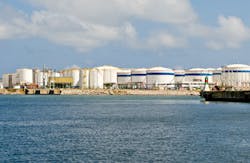With increased regulation of emissions, the shipping industry represents a promising new market for liquefied natural gas (LNG) and there is industry support for such a transition. However, cost remains a major barrier, according to a study by the European Commission.
The European Union's executive body found that stakeholders recognize the environmental advantages of LNG as a shipping fuel, but are still uncertain whether there is a clear business case for switching to the cleaner fuel.
"This study gives us a solid overview of the opportunities and remaining challenges for the use of LNG for shipping. More importantly: the outcome helps us to feed a public debate on LNG for shipping and provides arguments for a stakeholder debate at local level," commented Sandro Santamato, head of unit for Maritime Transport & Logistics at the European Commission.
According to the Commission, the major motivation for stakeholders to switch to LNG as a shipping fuel is to be compliant with Emission Controlled Area (ECA) zone requirements and the related positive environmental effects. But companies also have to take into account the financing of LNG as a fuel and the pricing of LNG itself.
The study found that for many companies, and especially shippers, LNG does not yet offer a profitable business model because the higher equipment costs for engines and tanks are not offset by savings in fuel or operating expenses. Another significant barrier is the lack of existing bunkering infrastructure for LNG.
Recent E.U. legislation aims to promote the use of LNG in the shipping industry.
Firstly, the Directive on sulfur content in marine fuels (2012/33/EU) allows the use of LNG as an alternative fuel to comply with more stringent emission standards. Revised rules that came into force at the start of this year require ships in the Baltic, North Sea and the English Channel to use fuels with no more than 0.1 percent sulfur content, according to environmental news service ENDS Europe.
Secondly, the Directive on deployment of alternative fuels infrastructure (2014/94/EU) aims to ensure minimum coverage of LNG refuelling points in the main maritime and inland ports across Europe by 2025 and 2030 respectively, with common standards for their design and use.
